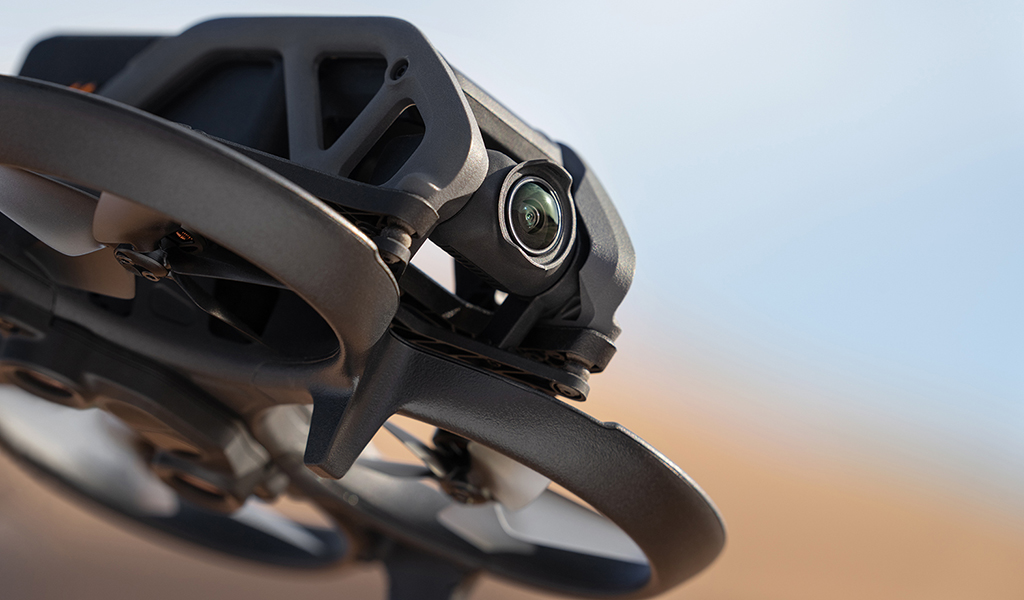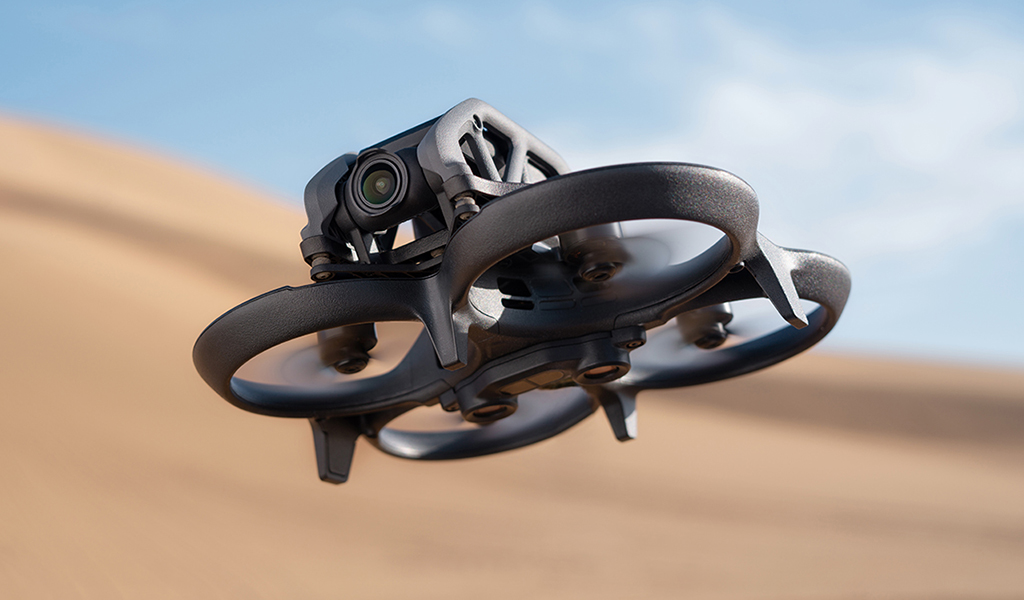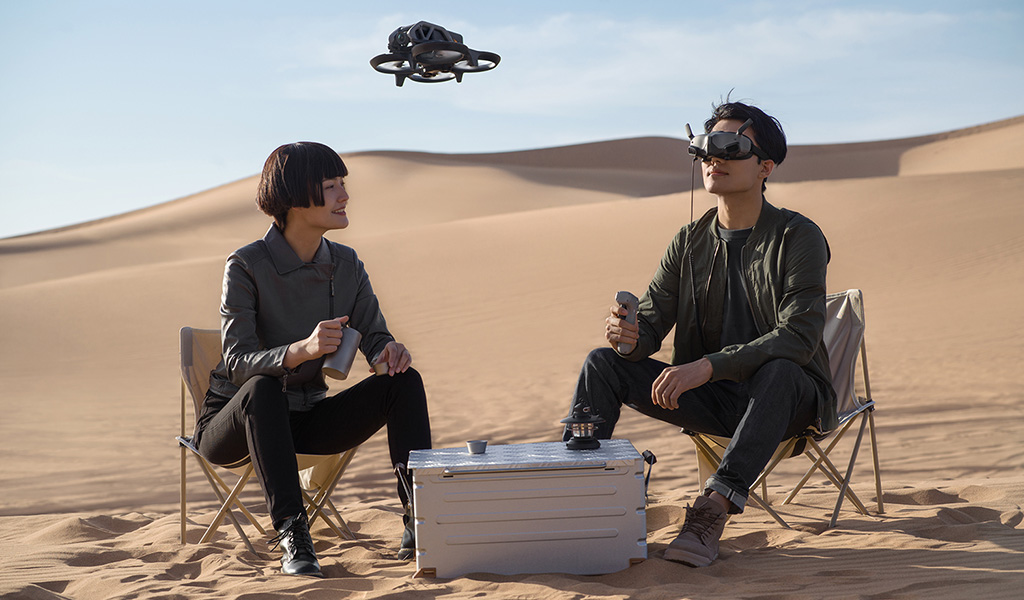
If you’ve ever wanted to peer through a headset to see what a DJI drone sees up in the air, the Avata may be exactly what you’re looking for. While first-person view (FPV) drones aren’t new, DJI hasn’t really entertained the idea of making them before.
Despite its newfound abilities, the Avata isn’t all that big. It’s fairly easy to transport, though you do also have to consider the DJI Goggles 2 and Motion Controller that come with it. The drone is compatible with DJI Goggles 2, DJI FPV Remote Controller 2, and DJI FPV Goggles V2. DJI will also offer the Avata in a bundle with one or more of these accessories, or as a standalone product.

A newer look
An obvious design change is how the propellers have guards around them to ward off any contact with objects. DJI built the Avata to keep flying in spite of that contact, but that also largely depends on what it’s coming into contact with.
It comes equipped with a 1/1.7-inch CMOS sensor that can record 4K footage up to 60fps, with a 155-degree ultra-wide-angle and impressive f/2.8 aperture. Rocksteady 2.0 and HorizonSteady image stabilization should keep footage from looking too shaky. That matters even more when the drone is on the move, swooping in for a shot on a subject, maintaining a more cinematic look throughout. The D-Cinelike mode brings some colour grading into the mix to really make video pop out.
It should be easier to get a little adventurous and creative with what you capture. The Avata comes with downward binocular vision and ToF infrared sensing for added safety, meaning the sensors detect obstacles below, even during low-altitude or indoor flight. The catch is that you can only get that sensing when using the Avata with the DJI FPV Remote Controller 2, or DJI Motion Controller in N Mode or S Mode.
DJI claims a battery life of up to 18 minutes in the air, though wind conditions and video recording will factor into how true that is. Given its portability, you could also get extra batteries and keep them close anytime you bring the Avata out for a flight.

New goggles to look through
The newer DJI Goggles 2 headset is now smaller, lighter, and equipped with Micro-OLED screens to increase sharpness when viewing the drone’s real-time viewpoint from the sky. The two screens inside offer a refresh rate up to 100 Hz. Plus, you get dioptric setting from +2.0 D to -8.0 D for optimized vision and comfort. That should also make them more comfortable to wear for longer stretches.
While wearing the goggles, you’ll want to use the remote controller to navigate it. That includes an Emergency Brake button to halt in place should you need to stop it quickly for any reason. If the Avata falls on its back for any reason, it can spring back into action on its own. Obstacale avoidance does also help keep the drone flying and not getting knocked down running into objects.
Coming soon
You can get your hands on a DJI Avata sooner than later, with pre-orders already available. Look for a few different configurations that change up the accessories, depending on what you get.




It would be nice if customers that bought the fly smart / as opposed to the fly PRO combo were given a break when they realize they should have purchased the fly pro combo as the “ goggles 2 “ are MUCH
better than the V 2 goggles !!!
I’m going to have to sell my V2 goggles at a significant loss and hopefully find
some goggles 2 under $ 900.— CAD $ .
Are we going to see distribution issues like the kind that unfolded with the DJI Mini 3 Pro pre-orders? Store pickup as an option to purchase that was offered much later than the pre-order option and ended up being the first to be fulfilled as an example.
Hi, we are anticipating demand for this product and are working on securing more inventory for it to lower the risk of distribution and supply delays.
Comments are closed.